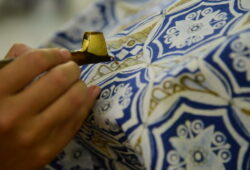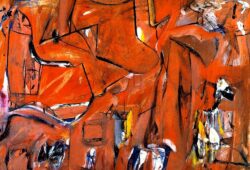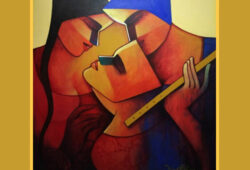Portrait Painting, Age Old Art
 Posted On
Posted On
Portrait painting began in the ancient civilizations of Egypt and Greece, where it was primarily used to memorialize the dead or immortalize deities and rulers
Portrait painting is a profound and intricate art form that has been central to human expression for centuries. It’s a tradition steeped in history, passion, and the deepest understanding of human emotion and experience. From the regal portrayals of monarchs to the evocative depictions of everyday people, this discipline captures the essence of humanity in its various manifestations.
A portrait is much more than just a likeness. The artist’s true task is to capture the spirit of the subject, to create a representation that tells a story beyond the physical appearance. This is achieved through the delicate play of light and shadow, the accurate rendering of form and structure, and the subtle touch of color that breathes life into a two-dimensional canvas.
Portrait painting began in the ancient civilizations of Egypt and Greece, where it was primarily used to memorialize the dead or immortalize deities and rulers. This tradition was carried forward into the Middle Ages, Renaissance, and Baroque periods, when artists began to delve deeper into the psychological aspects of their subjects. Masters such as Leonardo da Vinci and Rembrandt van Rijn brought forth unprecedented depth of expression, offering viewers a glimpse into the soul of the person depicted.
Modern and contemporary portrait painting has evolved, reflecting the shifting cultural and social dynamics. Artists like Lucian Freud and Jenny Saville have pushed the boundaries of traditional portraiture, exploring the human condition in unflinchingly honest and sometimes uncomfortable ways. Today’s portraits are less about depicting physical perfection and more about revealing truth and authenticity.
Techniques and media in portrait painting have also diversified over the centuries. While oil on canvas remains a popular choice for its rich color and flexibility, artists have also embraced watercolors, acrylics, and digital media. Techniques vary from artist to artist, some focusing on meticulous, hyper-realistic details, others on loose, impressionistic strokes. Each technique brings a unique aesthetic and emotional impact to the work.
Color and light are integral to portrait painting. They contribute not only to the accurate representation of the subject but also to the mood and tone of the piece. Through color, an artist can express emotional nuances and psychological undertones that give the portrait depth and complexity.
Composition, too, plays a significant role. It defines the relationship between the subject and their environment, informing the viewer about the context and the narrative. Whether the subject is placed in an intimate, closed space or an expansive, open setting, the composition tells a story about their life and character.
In essence, portrait painting is an art form that explores humanity at its most profound levels. It offers a connection between the artist, the subject, and the viewer, creating a dialogue that transcends time and space. Every stroke, every hue, every shadow is a piece of a puzzle that, when put together, unveils a narrative that’s as intimate as it is universal. From its ancient origins to its modern iterations, portrait painting continues to be a powerful medium of expression, offering unique insights into the human experience.



